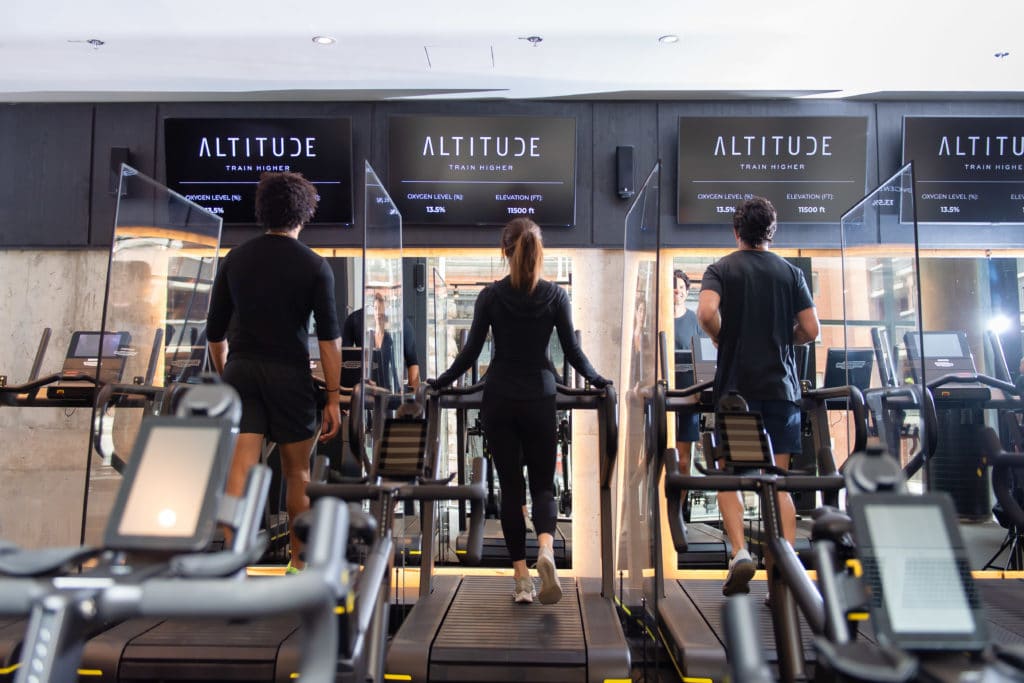If your racing season took you into the fall, it’s always a good idea to take a few weeks, or even a couple of months, off of a structured training plan. Physically, this gives your body a true chance to recover. Recovery is needed because prolonged racing and training causes a substantial degree of muscle breakdown and a systemic inflammatory response. It can take up to 19 days after an Ironman-distance triathlon for inflammation and cortisol to return to baseline levels, even in a well-trained athlete. Mentally, endurance events require long term commitment, self-discipline, and a high degree of day-to-day planning and time management. It’s healthy to give yourself a break from the rigidity of this type of schedule.
So once you’ve refreshed your mind and body and as the mornings continue to get darker, here are 5 reasons why you should get yourself back in gear with off-season high altitude training over the colder indoor months.

Controlled environments let you hone in on specific weaknesses.
Did hills eat you up this year? Does your form start to fall apart at a certain speed? Now is the time to work on whatever’s holding you back from the next level. Not having a race schedule allows you to build training blocks and choose training workouts with these goals in mind. Try running or cycling workouts using the treadmills and indoor trainers at Altitude. These workouts can help you work on goals like building aerobic capacity, speed and endurance.
Altitude workouts give you more bang for your buck.
In the altitude chamber, the air contains less oxygen, forcing your body to work harder to meet its oxygen demands. This natural challenge triggers a cascade of physiological adaptations, resulting in increased red blood cell production, enhanced lung capacity, and improved overall endurance. Altitude workouts supercharge your cardiovascular system, making every breath count and maximizing your calorie burn. This is a good thing, since even the strongest mental game can go a little bananas when on a trainer for long periods of time. Which brings us to our next point…
Classes do the job, and they’re social.
Endurance sports can be a little lonely. Maybe you’ve got some friends in the summer that you can join for long runs or rides, but the winter can be much more isolating. Rather than hole up, try a class specifically designed to challenge runners or cyclists at high altitude. Whether you’ve got a friend to go with you or not, the time always passes much more quickly in a group setting, not to mention it’s way more fun. Check out Altitude’s classes here!
Hit March with a spring in your step.
Most athletes look to start racing again for March-April. Nothing feels worse than sitting on your couch for several months, only to blow the dust off of your shoes in spring and have to dedicate the first 6-12 weeks of training to just base build. Even doing a few key workouts per week can keep you from detraining. Or, even better, can help you beef up your base before the warm weather comes around again. You’ll see faster progress and better results with consistent off-season high altitude training.
Keeps the winter blues at bay.
SADS, or seasonal affective disorder syndrome, is a proven disorder that manifests as an increase in sleep, sedentary behavior, depression and sometimes weight gain that occurs during the fall/winter months and remits in the spring. Research has shown that light therapy and getting outside is helpful to combat symptoms, as well as aerobic exercise. Bonus points if you can grab a buddy to join you.
Don’t let the cold winter days get in the way of your progress. Off-season high altitude training can help you build strength and maximize your fitness gains for your next big race.
